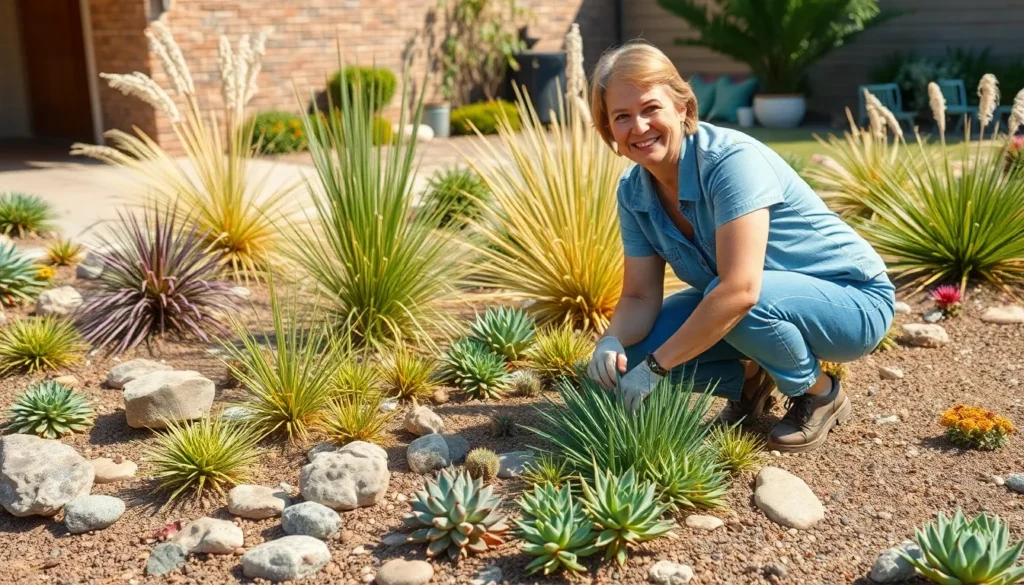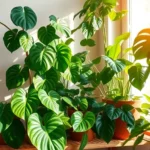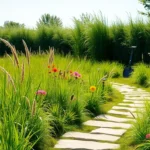We’ve all dreamed of having a beautiful garden that adds curb appeal and provides a peaceful retreat. But let’s face it – traditional gardening can feel overwhelming with its demanding watering schedules, constant weeding, and endless maintenance tasks. The good news? You don’t need to spend every weekend tending to your outdoor space to create something stunning.
Low maintenance gardens aren’t just a trend – they’re a smart solution for busy homeowners who want maximum beauty with minimal effort. Whether you’re dealing with a hectic work schedule, physical limitations, or simply prefer spending your free time relaxing rather than working in the dirt, we’ve got you covered.
From drought-resistant plants that thrive on neglect to clever design tricks that reduce upkeep, creating your dream garden doesn’t have to be a full-time job. Let’s explore practical ideas that’ll transform your outdoor space into a gorgeous, hassle-free haven that practically takes care of itself.
Choose Drought-Tolerant Plants for Your Low Maintenance Garden
Selecting plants that naturally resist drought conditions dramatically reduces our watering responsibilities while creating stunning landscapes. These resilient varieties establish deep root systems and store moisture efficiently, making them perfect foundation plants for busy gardeners.
Native Plants That Thrive in Your Climate
Native species represent the ultimate low maintenance choice because they’ve evolved specifically for local soil and weather patterns. We recommend researching indigenous plants like purple coneflowers, black-eyed Susans, and native wildflowers that flourish without constant attention. Regional nurseries typically stock these varieties and can provide exact recommendations based on our exact location.
Establishing native plants requires minimal soil amendment since they’re already adapted to existing conditions. Most varieties need watering only during their first growing season, then become completely self-sufficient. Wildlife benefits include attracting beneficial pollinators like butterflies and native bees while reducing pest problems naturally.
Succulents and Cacti for Water-Wise Landscaping
Succulents store water in their thick leaves and stems, creating living sculptures that require watering only once every few weeks. Popular varieties include jade plants, aloe vera, and echeveria that thrive in containers or rock gardens with excellent drainage. We can arrange different sizes and colors to create striking focal points without ongoing maintenance.
Desert cacti like barrel cactus and prickly pear survive extreme drought conditions while producing spectacular blooms. These plants actually prefer neglect and can suffer from overwatering, making them ideal for forgetful gardeners. Cold hardy varieties extend succulent gardens into northern climates where traditional options might struggle.
Container arrangements allow us to move succulents indoors during harsh winters or rearrange displays seasonally. Most varieties propagate easily from cuttings, providing free plants to expand our collection or share with neighbors.
Ornamental Grasses That Require Minimal Care
Ornamental grasses provide year round structure and movement in our industry while demanding almost no maintenance once established. Varieties like fountain grass, blue fescue, and feather reed grass create textural interest through all seasons. We can plant them as borders, mass plantings, or specimen features that require cutting back just once annually.
These grasses develop extensive root systems that prevent soil erosion while competing successfully with weeds. Most varieties prefer poor to average soil conditions and actually produce better foliage color when not fertilized regularly. Deer typically avoid ornamental grasses, eliminating another common garden problem.
Seed heads provide winter interest and food for birds, extending the garden’s appeal into dormant months. We can leave stems standing until early spring, then cut everything back to 4-6 inches for fresh growth.
Create Defined Garden Zones to Reduce Upkeep

Organizing your garden into exact zones eliminates guesswork and dramatically reduces maintenance time. We’ll show you how strategic zoning transforms chaotic gardens into efficient, self-sustaining landscapes.
Group Plants by Water and Light Requirements
Grouping plants by water and sunlight needs optimizes resource usage while minimizing daily garden tasks. Water-loving plants like hostas and astilbe thrive together in shaded, moist areas, while drought-tolerant specimens such as lavender and sedum flourish in sunny, dry zones.
Creating distinct hydration zones reduces watering frequency and prevents overwatering sensitive plants. Mediterranean herbs like rosemary and thyme require minimal water when planted together, while tropical plants like hibiscus and bird of paradise need consistent moisture in their dedicated area.
Sunlight requirements naturally separate plants into efficient groupings that reduce maintenance needs. Full-sun plants including black-eyed Susan and coneflower require 6-8 hours of direct sunlight, while shade plants like coral bells and caladium thrive with 2-4 hours of filtered light.
Use Raised Beds for Better Soil Control
Raised beds provide superior soil quality control without constant amendments and costly soil treatments. We can fill raised beds with premium soil mixes that drain properly and retain nutrients, eliminating the need for yearly soil testing and frequent fertilization.
Better drainage in raised beds prevents root rot and reduces plant disease issues that plague ground-level gardens. Excess water flows away naturally, protecting plants from waterlogged conditions that kill sensitive root systems and create fungal problems.
Defined growing spaces reduce soil compaction from foot traffic and eliminate the need for regular soil aeration. Plants in raised beds develop stronger root systems because they’re never stepped on, reducing stress and maintenance requirements.
Install Permanent Pathways to Prevent Trampling
Gravel pathways define garden areas while preventing soil compaction from foot traffic that damages plant roots. These permanent walkways eliminate the need for constant lawn maintenance and create clear boundaries between different garden zones.
Mulch pathways add aesthetic appeal while reducing weeding tasks and maintaining consistent moisture levels around plants. Wood chips or bark mulch naturally suppress weeds and decompose slowly, providing nutrients to surrounding plants without frequent replacement.
Permanent walkways prevent accidental plant damage that occurs when visitors step on growing areas, reducing plant replacement costs and maintenance time. Stone or brick paths create lasting answers that withstand weather conditions and heavy use without deterioration.
Install Efficient Irrigation Systems
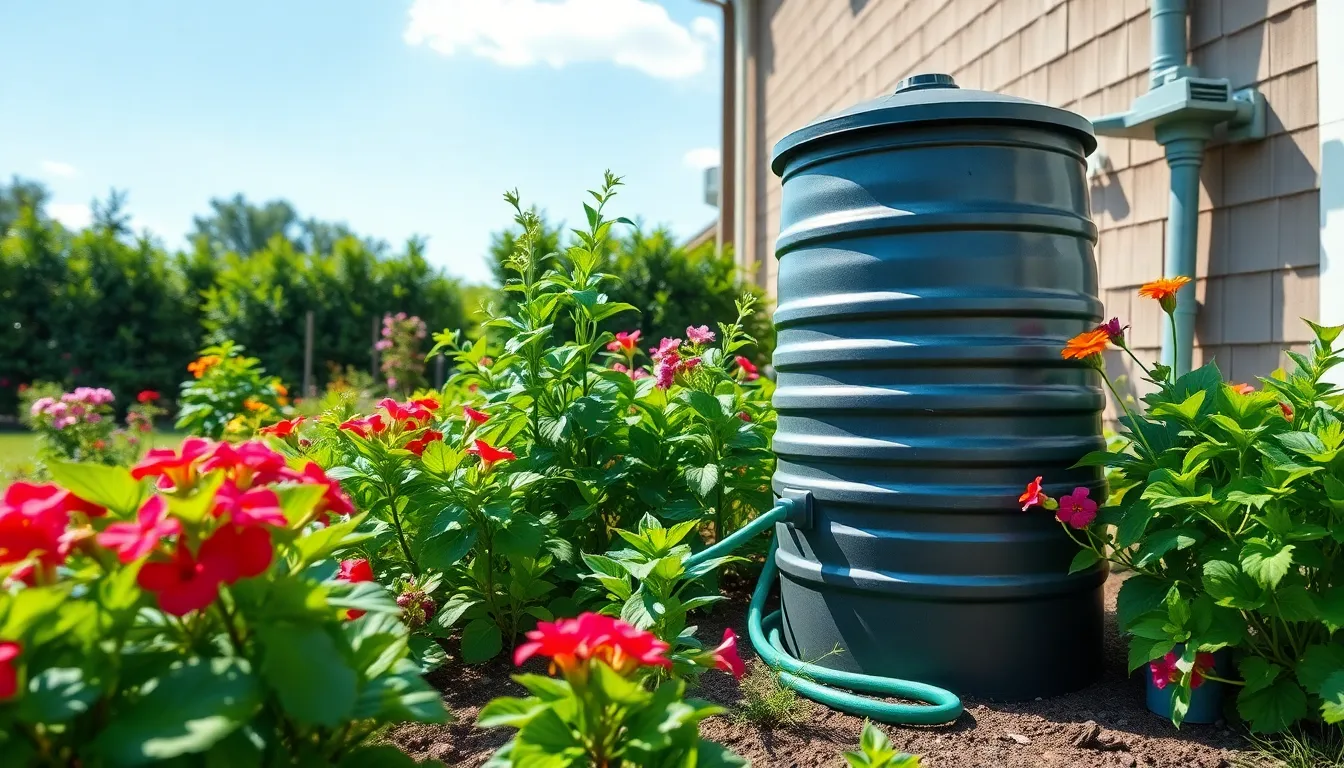
Water management becomes effortless when we carry out the right irrigation technology. Smart watering systems reduce our daily maintenance tasks while keeping plants healthy and thriving.
Drip Irrigation for Targeted Watering
Drip irrigation delivers water directly to plant roots, eliminating waste and maximizing efficiency. This system reduces water usage by up to 50% compared to traditional sprinkler methods, making it both environmentally friendly and cost-effective. We can customize drip lines to accommodate different plant spacing and water requirements throughout our garden beds.
Installation involves placing small emitters near each plant, connected by flexible tubing that distributes water slowly and steadily. Timer controls allow us to automate watering schedules, ensuring consistent moisture without daily intervention. The targeted approach prevents water from reaching unwanted areas where weeds might germinate.
Soaker Hoses for Even Moisture Distribution
Soaker hoses provide uniform water distribution along their entire length, making them perfect for watering large garden areas efficiently. These porous hoses release water gradually through tiny holes, allowing deep soil penetration without surface runoff. We can snake them through flower beds, vegetable gardens, or around trees to maintain consistent soil moisture.
Flexibility makes soaker hoses ideal for irregularly shaped garden beds where rigid sprinkler systems won’t work effectively. Water pressure stays low, reducing the risk of overwatering while ensuring every plant receives adequate moisture. Multiple hoses can connect together to cover extensive garden areas with minimal setup effort.
Rain Barrels for Sustainable Water Collection
Rain barrels capture and store natural precipitation, providing a free water source for our low maintenance gardens during dry periods. These containers collect runoff from roof gutters, reducing our reliance on municipal water supplies while lowering utility bills. Standard rain barrels hold 50 to 80 gallons, supplying enough water for several days of garden irrigation.
Modern rain barrel systems include overflow valves, spigots for easy water access, and mosquito screening to prevent pest breeding. We can connect multiple barrels together to increase storage capacity for larger gardens. The collected rainwater contains no chemicals or additives, making it ideal for sensitive plants and organic gardening practices.
Apply Strategic Mulching Techniques
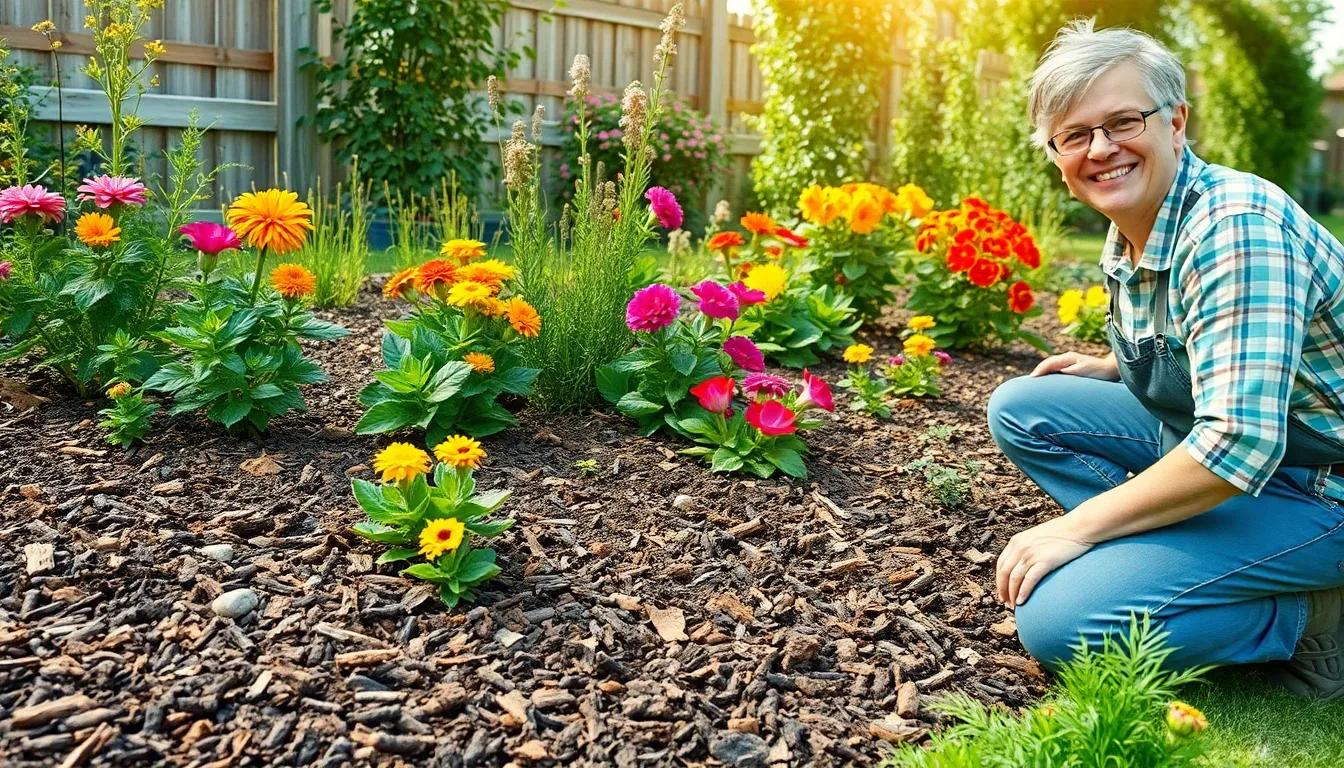
Strategic mulching transforms our gardens into self-sustaining ecosystems that require minimal intervention. We’ll reduce watering frequency, eliminate weeding sessions, and improve soil health through proper mulch selection and application.
Organic Mulch Options for Soil Health
Bark chippings provide exceptional moisture retention while effectively suppressing weeds throughout the growing season. We can spread these natural materials around trees, shrubs, and perennial beds to create a protective barrier that slowly decomposes and enriches our soil.
Compost serves as both mulch and fertilizer, improving soil structure while delivering essential nutrients directly to plant roots. We’ll apply finished compost around vegetable gardens, flower beds, and container plants to boost soil fertility and water retention capacity.
Leaf mold offers rich nutrients and superior moisture retention properties that benefit acid-loving plants like azaleas, rhododendrons, and blueberries. We can create our own leaf mold by composting fallen leaves or purchase ready-made versions from garden centers.
Inorganic Mulch for Long-Term Weed Control
Gravel allows excellent drainage while completely inhibiting weed growth in high-traffic areas and around drought-tolerant plants. We’ll use pea gravel, crushed stone, or river rock in pathways, around succulents, and in Mediterranean-style garden beds.
Decorative stones provide similar benefits to gravel while adding visual appeal through color and texture variations. We can select from lava rock, slate chips, or colored glass mulch to complement our garden’s design aesthetic and plant palette.
Proper Mulch Depth and Application Methods
Depth requirements typically range from 2-3 inches to effectively prevent weeds from germinating and establishing in our garden beds. We’ll measure mulch depth regularly and refresh thin areas to maintain consistent coverage throughout the growing season.
Application techniques involve spreading mulch evenly while avoiding direct contact with plant stems and tree trunks to prevent moisture buildup and pest issues. We’ll leave 2-3 inches of space around plant bases and rake mulch smooth for professional appearance and optimal function.
Select Perennial Plants Over Annuals
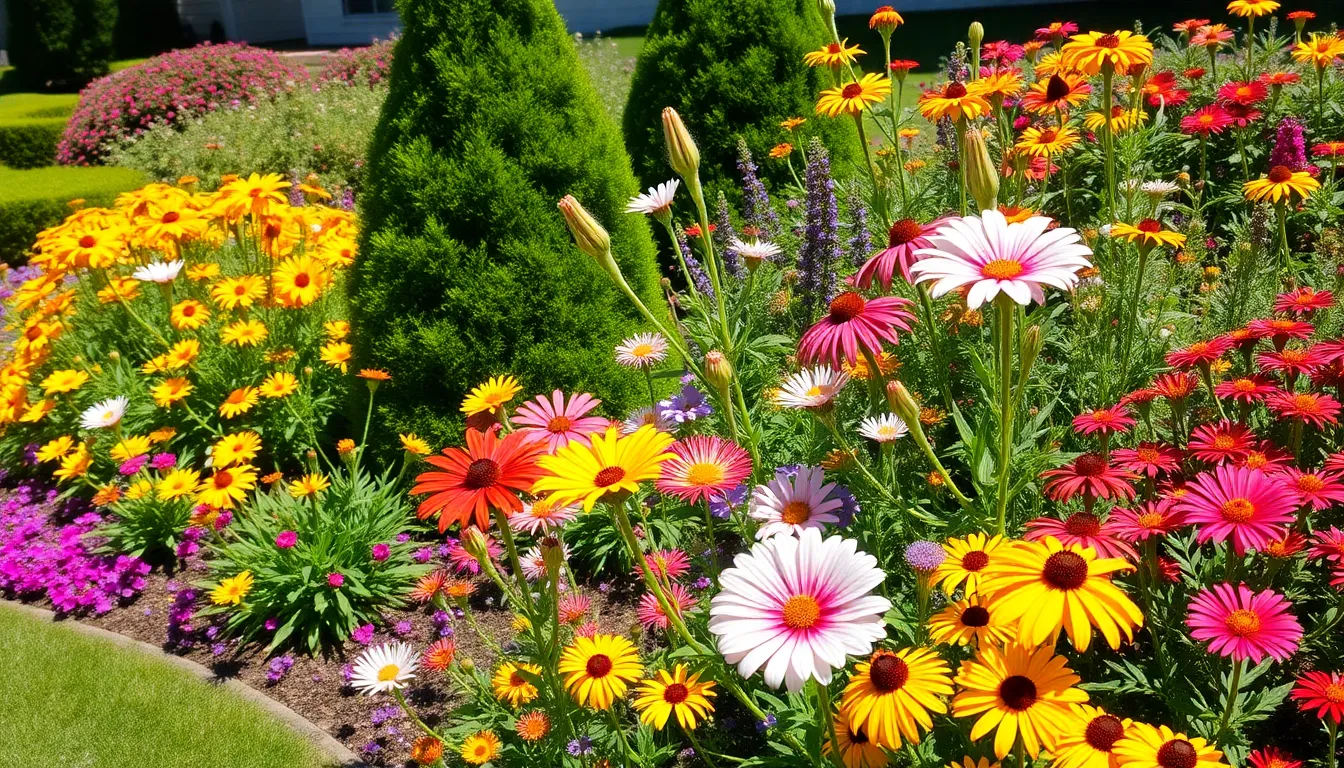
Perennial plants offer one of the smartest investments we can make in our low maintenance garden strategy. These plants return year after year, establishing deep root systems that make them more drought-resistant and naturally require less water and fertilizer than annuals.
Long-Blooming Perennial Flowers
Long-blooming perennials maximize our garden’s visual impact while minimizing maintenance efforts throughout the growing season. Daylilies (Hemerocallis) provide continuous color from early summer through fall, producing dozens of blooms per plant with virtually no care required. Coneflowers (Echinacea) deliver vibrant purple, pink, or white flowers for months, attracting beneficial pollinators while requiring only occasional deadheading. Coreopsis creates cheerful yellow blooms that rebloom throughout the season with minimal intervention, often self-seeding to expand our garden naturally.
These extended-blooming varieties eliminate the need for frequent replanting and provide consistent garden interest. We can expect these perennials to produce flowers for 3-4 months compared to annuals that need replacement every growing season. Their established root systems access deeper soil moisture, reducing our watering frequency by up to 60% compared to shallow-rooted annual flowers.
Evergreen Shrubs for Year-Round Structure
Evergreen shrubs create the backbone of our low maintenance industry, providing consistent structure and greenery throughout all seasons. Boxwood (Buxus) forms neat, compact shapes that require minimal pruning and maintain their appearance year-round. Holly (Ilex) offers glossy foliage and colorful berries, thriving with little care while providing natural privacy screening. Juniper varieties create striking architectural elements with their diverse forms and colors, from low-spreading ground covers to upright columnar shapes.
These shrubs define our garden spaces with permanent structure, eliminating the seasonal cleanup and replanting associated with deciduous options. We benefit from their ability to withstand harsh weather conditions while maintaining their visual appeal. Most evergreen shrubs require pruning only once or twice per year, compared to perennial beds that may need monthly attention during peak growing season.
Self-Seeding Plants That Naturalize
Self-seeding plants transform our gardens into naturally evolving landscapes that fill gaps and expand coverage without our intervention. Columbine (Aquilegia) produces delicate, colorful flowers in spring, then drops seeds that create new plants in unexpected locations throughout our garden. Poppies (Papaver) provide bright splashes of color and self-sow readily, creating natural drifts that change and expand each year. Forget-me-nots (Myosotis) spread their tiny blue flowers across shaded areas, creating carpets of color that require no replanting.
These naturalizing plants reduce our long-term planting costs and create ever-changing garden compositions that change organically over time. We can expect self-seeding varieties to fill bare spots within 2-3 growing seasons, creating a mature garden appearance without additional investment. Their ability to thrive without extra care makes them ideal for areas of our garden that receive less attention, such as slopes or back borders.
Design Hardscape Elements to Minimize Maintenance
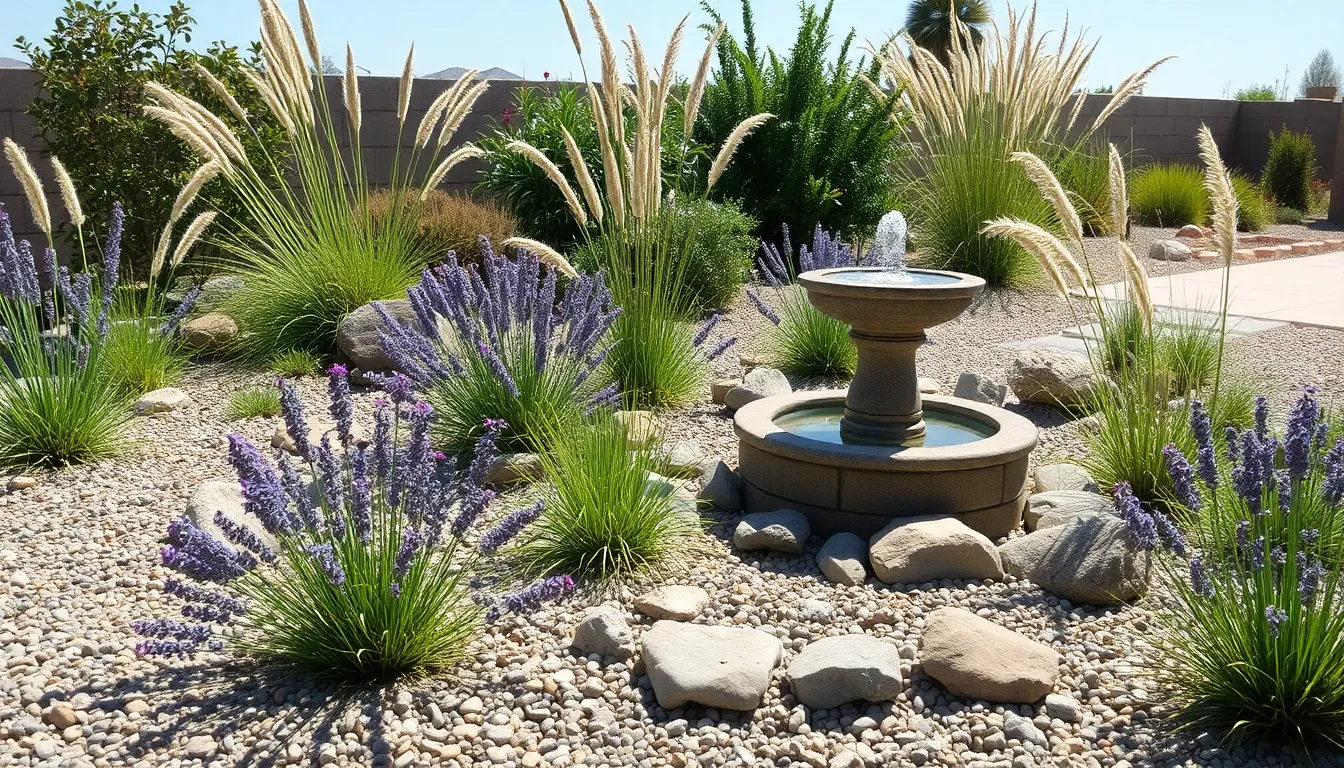
Building on our foundation of low maintenance plant choices and strategic garden zones, we can significantly reduce upkeep by incorporating hardscape elements that eliminate the need for regular watering, weeding, and mowing.
Gravel Gardens and Rock Features
Gravel gardens excel at suppressing weed growth while allowing efficient water drainage, making them perfect for sunny or dry areas of our landscapes. We can create stunning visual displays by combining different sizes of gravel with drought tolerant plants like lavender, ornamental grasses, and sedums. Rock gardens featuring boulders paired with small stones add dramatic focal points while minimizing our watering and weeding responsibilities.
These installations work particularly well in challenging areas where traditional lawns struggle to thrive. We find that incorporating river rocks of varying sizes creates natural looking arrangements that require virtually no ongoing care. The key lies in proper installation with industry fabric underneath to prevent weed penetration while still allowing water to reach plant roots.
Decorative Stones and Pavers
Decorative stones eliminate the need for regular fertilizing, mowing, or intensive watering in garden beds and pathways. We can choose from river rocks, lava stones, or crushed granite to create attractive ground covers that last for years with minimal intervention. Paver patios provide stable, attractive areas for outdoor activities while requiring only occasional cleaning with a garden hose.
Permeable pavers offer additional benefits by managing water runoff more effectively than traditional concrete surfaces. These materials create clean, attractive lines in our garden design while reducing maintenance time significantly. We recommend selecting neutral colored stones that complement our existing industry elements and won’t show dirt or debris as readily.
Low-Maintenance Water Features
Self-contained water features like recirculating fountains add tranquility to our gardens without the complex maintenance requirements of large ponds. Modern fountains are designed with energy efficient pumps and durable materials that withstand weather conditions year round. Small, contained ponds with built in filtration systems provide wildlife benefits while requiring minimal ongoing care.
We can incorporate solar powered water features that operate independently without electrical connections, further reducing maintenance needs. These installations typically require only seasonal cleaning and occasional water level checks. The key advantage lies in their ability to create peaceful focal points that enhance our garden’s ambiance without adding to our weekly maintenance routines.
Choose the Right Lawn Alternatives
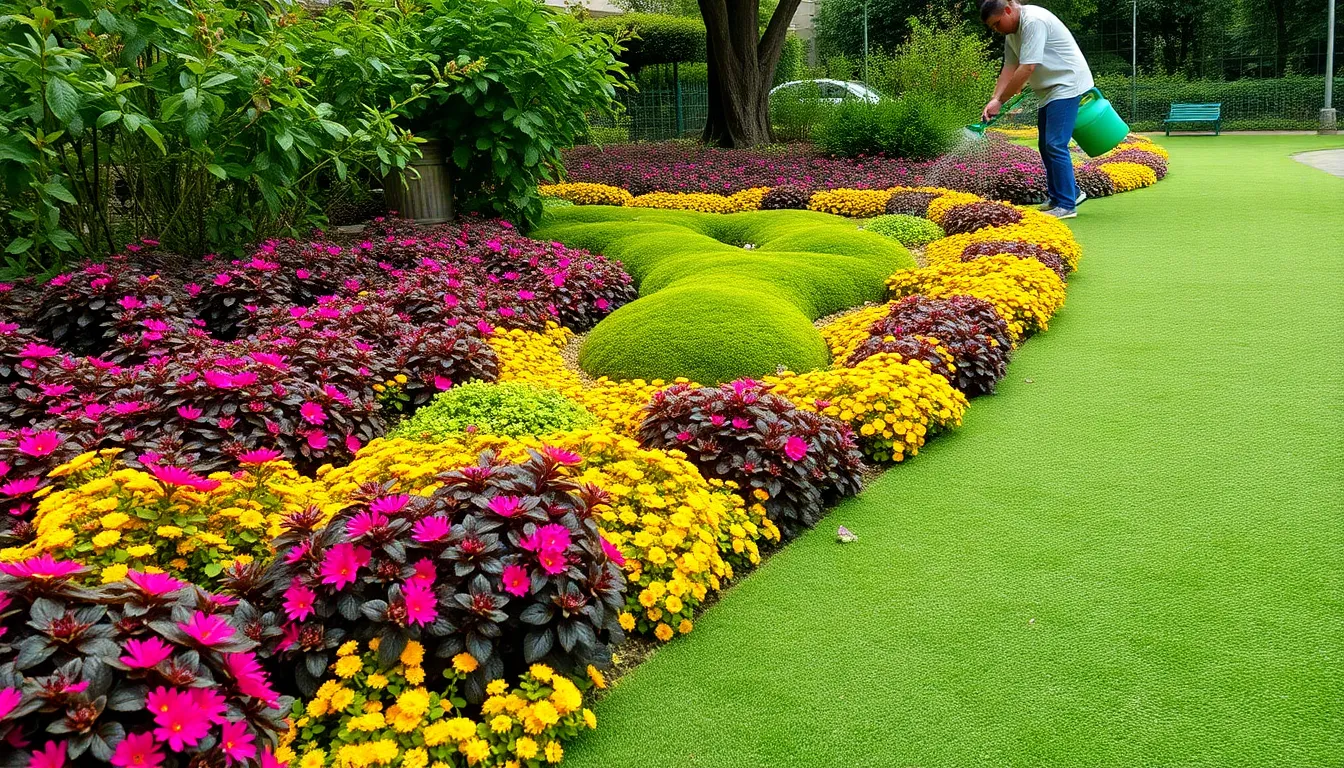
Traditional grass lawns demand constant attention with weekly mowing, regular watering, and seasonal fertilizing. We can transform our gardens by selecting smart alternatives that provide the same visual appeal without the maintenance burden.
Ground Cover Plants Instead of Grass
Ground cover plants offer beautiful alternatives that eliminate mowing while creating stunning visual displays. Dwarf cinquefoil creates an eye catching mosaic with its chartreuse and light green foliage that stays attractive throughout growing seasons. This hardy plant spreads naturally to form dense carpets that suppress weeds effectively.
Golden carpet sedum provides exceptional drought tolerance while requiring minimal care once established. We can rely on this succulent ground cover to thrive in poor soil conditions where traditional grass struggles. The bright yellow flowers add seasonal interest without demanding deadheading or special attention.
Creeping plants like golden creeping Jenny create vibrant combinations when mixed with dwarf cinquefoil. These spreading varieties fill spaces quickly and adapt to various light conditions. We recommend establishing these plants in spring for best results, as they’ll have time to develop strong root systems before winter.
| Ground Cover Option | Maintenance Level | Drought Tolerance | Seasonal Interest |
|---|---|---|---|
| Dwarf Cinquefoil | Very Low | High | Spring to Fall |
| Golden Carpet Sedum | Minimal | Excellent | Summer Flowers |
| Golden Creeping Jenny | Low | Moderate | Year Round Foliage |
Artificial Turf for High-Traffic Areas
Artificial turf eliminates all traditional lawn maintenance tasks including mowing, watering, and fertilizing. Modern synthetic grass provides realistic appearance that withstands heavy foot traffic without showing wear patterns. We find this option particularly valuable for play areas, pet runs, and frequently used walkways.
High traffic zones benefit most from artificial installation since natural grass often develops bare spots under constant use. Families with children or pets appreciate the consistent green appearance that stays attractive regardless of weather conditions. The initial investment pays for itself through eliminated water bills and lawn care expenses.
Occasional cleaning represents the only maintenance requirement for quality artificial turf. We simply rinse the surface with water to remove dust and debris, making this option ideal for busy homeowners. Most installations include drainage systems that prevent water pooling during heavy rains.
Moss Gardens for Shaded Spaces
Moss thrives in shaded areas where traditional grass fails to establish properly. These ancient plants create lush green carpets without requiring any mowing or regular watering once established. We can develop moss gardens in areas under trees, beside buildings, or in naturally damp locations.
Shaded spaces transform into serene retreats when we encourage moss growth instead of fighting it. Natural moss establishes itself in suitable conditions and spreads gradually to cover bare soil. The soft texture provides pleasant walking surfaces while requiring zero mechanical maintenance.
Minimal maintenance makes moss gardens perfect for forgotten corners and hard to reach areas. We don’t need to fertilize, aerate, or overseed these natural ground covers. Rain provides adequate moisture in most climates, and moss actually prefers the acidic conditions that challenge other plants.
Implement Smart Pruning and Maintenance Schedules
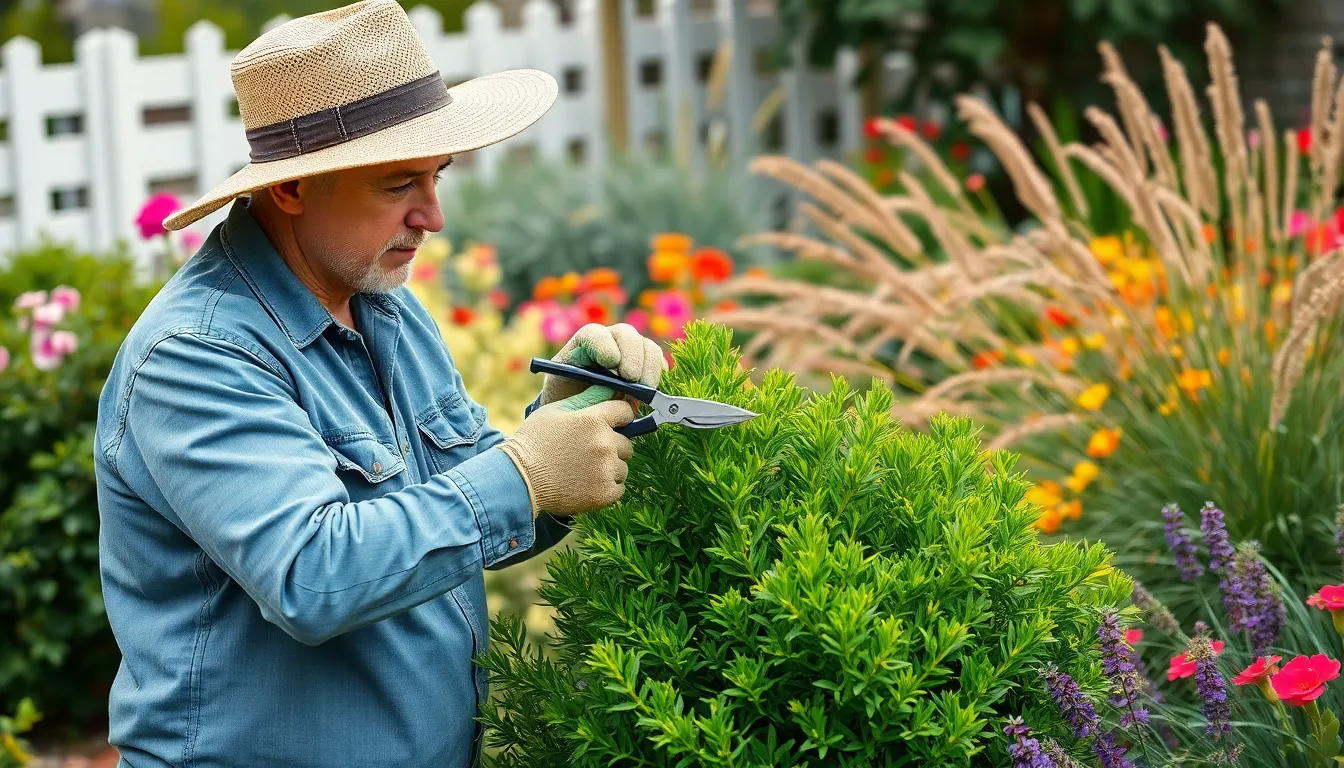
Smart pruning and maintenance schedules keep our low maintenance gardens healthy year round without overwhelming our busy lifestyles. Strategic timing reduces our workload while ensuring plants thrive with minimal intervention.
Annual Pruning Tasks by Season
Spring pruning focuses on removing dead growth and damaged branches from winter weather. We’ll tackle this essential task between March and early May when plants begin showing new growth. Dead heading spent flowers and clearing debris sets the foundation for healthy seasonal development.
Summer maintenance involves light shaping and deadheading to encourage continued blooming. We can perform these quick tasks during our regular garden walks from June through August. Removing suckers from trees and pinching back leggy growth keeps plants compact and attractive.
Fall preparation helps plants survive winter while reducing spring cleanup efforts. We’ll complete these tasks between September and November by cutting back spent perennials and removing diseased foliage. Leaving ornamental grasses and seed heads provides winter interest while supporting local wildlife.
Winter pruning works best for dormant deciduous trees and shrubs when their structure is clearly visible. We can safely prune these plants from December through February without stimulating new growth that could be damaged by late frosts.
Tools and Techniques for Efficient Garden Care
Sharp bypass pruners handle most cutting tasks up to 3/4 inch diameter branches with clean, precise cuts that heal quickly. We’ll invest in quality pruners that stay sharp longer and reduce hand fatigue during extended use. Regular cleaning and oiling keeps these essential tools performing at their best.
Loppers and hedge shears extend our reach for larger branches and hedge trimming without requiring ladders or excessive stretching. Electric or battery powered trimmers speed up work on hedges and large shrubs significantly. These power tools cut maintenance time by up to 60% compared to manual shears.
Mulching and weeding tools include hand cultivators and hoes for quick weed removal before they establish deep roots. We’ll apply fresh mulch layers annually to suppress weeds and retain soil moisture. Proper mulch application reduces weeding time by 70% throughout the growing season.
Monitoring techniques help us identify maintenance needs before they become major problems. We can spot signs of disease, dieback, or overcrowding during regular garden walks. Early intervention prevents small issues from requiring extensive corrective work later.
Signs When Professional Help Is Needed
Overgrown trees with large branches or hazardous positioning require professional assessment and removal techniques. We shouldn’t attempt pruning near power lines or branches larger than 4 inches in diameter without proper equipment and training. Professional arborists have specialized tools and insurance for safe tree work.
Persistent plant diseases or pest infestations that don’t respond to basic treatments need expert diagnosis and targeted answers. We’ll contact certified professionals when we encounter recurring problems like fungal infections, scale insects, or mysterious plant decline. Early professional intervention saves money and prevents disease spread.
Hardscape repairs including damaged pathways, retaining walls, or irrigation system failures exceed typical homeowner capabilities. We should seek professional help for electrical work on industry lighting and complex drainage issues. These specialists ensure repairs meet local codes and provide long lasting answers.
Conclusion
Creating a low maintenance garden doesn’t mean sacrificing beauty or functionality. By implementing these strategic approaches we’ve outlined you’ll transform your outdoor space into a thriving retreat that works with your busy lifestyle rather than against it.
The key lies in making smart choices from the beginning – selecting the right plants designing efficient zones and incorporating hardscape elements that reduce ongoing work. When we combine drought-tolerant perennials with proper mulching techniques and efficient irrigation systems we create gardens that practically care for themselves.
Remember that the best low maintenance garden is one that suits your exact conditions and preferences. Start small experiment with different elements and gradually build the garden of your dreams without the overwhelming maintenance burden.
Frequently Asked Questions
What makes a garden low maintenance?
A low maintenance garden features drought-resistant plants, efficient irrigation systems, strategic mulching, and hardscape elements that require minimal care. Key characteristics include using native plants, perennials instead of annuals, defined garden zones, and permanent pathways. These elements work together to reduce watering, weeding, pruning, and other time-consuming tasks.
Which plants are best for low maintenance gardens?
Drought-tolerant plants, native species, succulents, cacti, and ornamental grasses are ideal choices. Long-blooming perennials like daylilies, coneflowers, and coreopsis provide consistent color with minimal care. Evergreen shrubs offer year-round structure, while self-seeding plants like columbine and poppies naturally fill garden gaps over time.
How does mulching reduce garden maintenance?
Mulching suppresses weeds, retains soil moisture, and improves soil health. Organic mulches like bark chippings and compost decompose to feed plants, while inorganic options like gravel provide long-term weed control. Proper mulch application reduces watering needs, eliminates frequent weeding, and creates a polished appearance with minimal effort.
What are the benefits of drip irrigation systems?
Drip irrigation delivers water directly to plant roots, reducing water usage by up to 50% compared to traditional sprinklers. It maximizes efficiency, minimizes evaporation, and prevents overwatering. This system requires less monitoring than hand-watering and helps maintain consistent soil moisture levels automatically.
Can I replace my lawn with low maintenance alternatives?
Yes, ground cover plants like dwarf cinquefoil and golden carpet sedum eliminate mowing while providing visual appeal. Artificial turf works well for high-traffic areas, requiring no watering or cutting. Moss gardens thrive in shaded spaces without regular maintenance, transforming neglected areas into beautiful, serene retreats.
How often should I prune plants in a low maintenance garden?
Follow seasonal pruning schedules: spring cleanup for dead material, summer shaping for overgrown plants, fall preparation for winter, and winter pruning for dormant plants. Using sharp, quality tools makes tasks more efficient. Most low maintenance plants require minimal pruning, with some needing attention only once or twice yearly.
What hardscape elements reduce garden maintenance?
Gravel gardens, decorative stones, and pavers eliminate the need for fertilizing, mowing, or intensive watering. Rock features provide excellent drainage and weed suppression. Low-maintenance water features like self-contained fountains add beauty without complex upkeep. These elements create structure while minimizing plant care requirements.
How do I create defined garden zones?
Group plants according to their water and light requirements to optimize resource usage. Use raised beds for better soil control and drainage, and install permanent pathways to prevent soil compaction. This organization streamlines maintenance tasks and allows you to care for similar plants together more efficiently.

